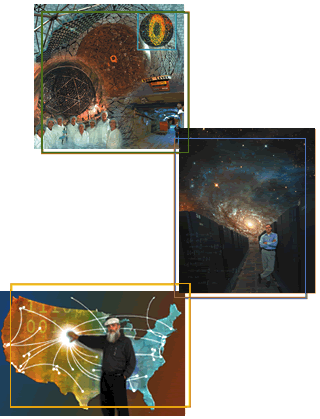|
|
|
|
 |
For many of us, not a day goes
by when we do not depend upon a computer to perform some task.
For basic science endeavors, computers have become even more
essential, with an ever-increasing demand for the brute computational
horsepower available only through the supercomputers of Berkeley
Lab's National Energy Research Scientific Computing Center (NERSC).
Number crunching at NERSC this past year played a key role in
the discovery of a star that exploded 11 billion years ago and
left clues that today's universe is filled with dark energy,
and in the discovery that neutrinos, tiny particles long thought
to have no mass at all, actually have enough that their combined
mass exceeds that of all the visible stars in the universe.
NERSC is also set to join the U.S. Department of Energy's Science
Grid, a vast array of computational and data storage systems
connected via the Internet to create a virtual lab which stretches
across the country. |
 |
|
|
|
|
|
 |
|




